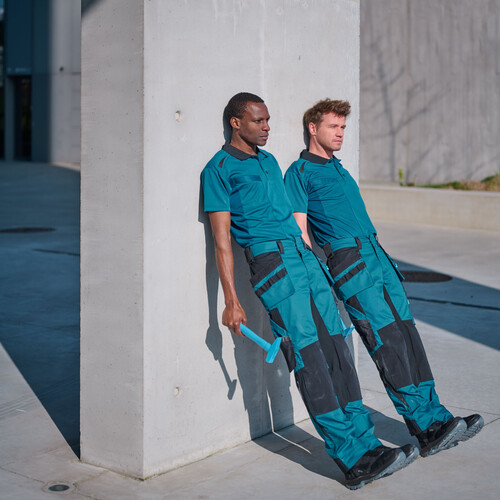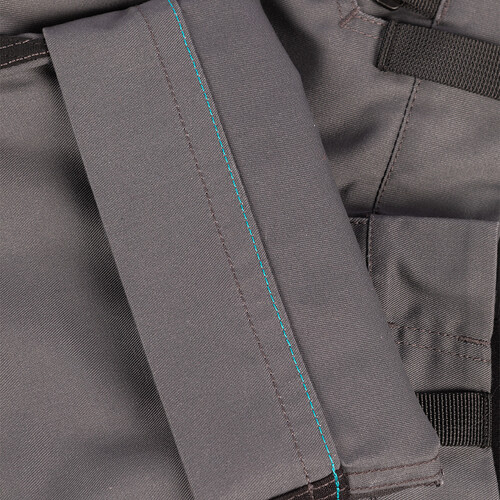Find your size

SIZE MATTERS: FIND YOUR PERFECT WORKWEAR SIZE
It is common knowledge that bigger tools, aren’t necessarily always better tools. Yet, when it comes to workwear, size absolutely matters.
On this page we explain to you everything there is to know about workwear sizes, work trouser lengths, body measurements and so much more.
How to measure your size?
Easy! Just follow these simple steps:

Step #1. Preparation phase: ready to measure up?
Find yourself a tape measure, take off your shoes and put on well-fitted clothes. Ideally, you get someone else to assist you, since that will assure a nice and straight up position. Otherwise, take extra care to stand up straight and breathe normally.
Note that there is no need whatsoever to puff out your chest or to suck in your stomach. This will not affect your actual (real life) clothing size...

Step #2. TAKE YOUR BODY MEASUREMENTS

Take the measurements you need, as indicated in the picture. Place the tape measure flat against your body. Make sure it is snug but not too tight.
A = Waist:
Measure horizontally around the waist.
B = Chest:
Measure horizontally under the arms, around the widest part of the chest.
C = Total body length:
Measure from the top of the head till the ground.
D = Inside leg length:
Measure from the crotch of the trousers till the ground.
E = Hips:
Measure horizontally around the hips.

Step #3. FIND YOUR PERFECT FIT & … LOOK AMAZING
Consult the size charts to find your perfect fit. When it comes to trousers sizes, note that your inside leg length will have an impact on the size you need to choose:
Men:
- Inside leg length ± 76cm = choose size “S” (= Short inside leg length)
- Inside leg length ± 81cm = choose size “R” (= Regular inside leg length)
- Inside leg length ± 86cm = choose size “L” (=Long inside leg length)
Women:
- Inside leg length ± 79 cm = choose size “R” (= Regular inside leg length)
How do you lengthen your work trousers?
Are your work trousers too short? Don’t worry! The SYNQ work trousers’ design gives you several, practical options to add extra length to your look.
- For men: choose your correct inside leg length and/or use the extendable hem.
- For women: easily lengthen your trouser legs by 5cm.
Why do you need the right size of workwear?
- Comfort
- When it fits, it fits. And that’s just nice and easy isn’t it? No need to endlessly pull up your trousers, no shirt sleeves that annoyingly cling over your biceps, no sleeves that cover your hand,… What’s more, if your clothing fits correctly, that also means that all your pockets are at the perfect height.
- Safety
- Size matters, and so does safety. Did you know that if you wear work trousers with knee pads, your knees will only be correctly protected if the knee pockets are situated at the right height?
- Durability
- Wearing the proper size increases the lifespan of your clothing item. Jackets that are too big will wear down first at sleeve’s end. With work trousers that sag all the time, it’s particularly the crotch area that is put under stress.
- Looks
- Let’s be fair and square: workwear that fits perfectly always looks better. Period.
Do not hesitate to contact our sales teams!
What's next?
Found your perfect size? Time to find the workwear that is perfectly in sync with your needs.
Read more about our 3 different collections and the specific benefits they have to offer.







